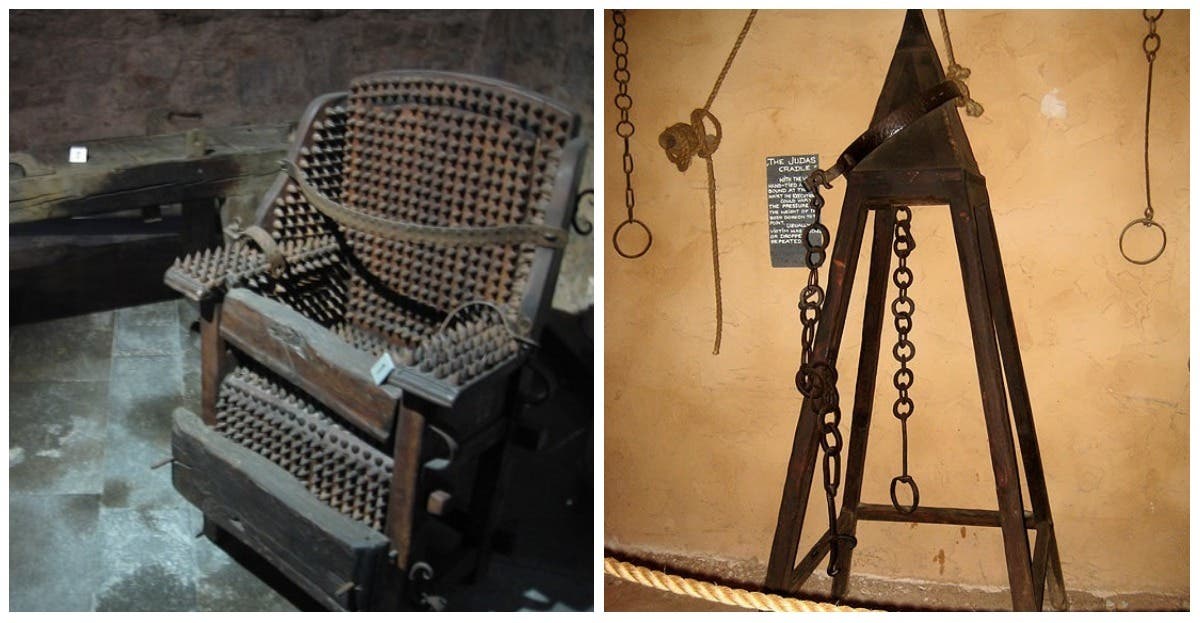People in spain used to employ a form of torture called the spanish donkey victims had to sit high up straddling a board while torturers tied increasingly heavy weights to their legs

People in Spain used to employ a form of torture called the Spanish Donkey.

In Spain’s dark history, torture was not an uncommon practice. Various methods of torture were used to extract confessions or punish individuals deemed guilty of crimes. One such method was known as the Spanish Donkey, also referred to as the Wooden Horse. This sadistic torture device left its victims in extreme pain and agony.
The Spanish Donkey was a cruel invention designed to subject the victims to excruciating pain and suffering. The device consisted of a sharply angled wooden board, resembling a triangular sawhorse or a donkey’s back. The victim was made to sit astride the apex of the wooden horse, with their weight resting on their genitals or anus.

As the victim straddled the pointed edge, the tormentors tied heavy weights to their legs, whose weight progressively increased over time. The continuous strain exerted unbearable pressure on the victim’s groin area, causing immense pain, discomfort, and severe injury. Additionally, the sharp edge could also cause lacerations and puncture wounds, exacerbating the agony.
The Spanish Donkey was primarily used for public humiliation and punishment, often in front of large crowds. Victims were exposed to not only physical torment but also emotional and psychological distress. They were forced to endure the pain while being subjected to ridicule, insults, and mockery from the spectators, further dehumanizing them.
This gruesome form of torture was prevalent during the Spanish Inquisition, a period marked by religious persecution and ruthless suppression of heresy. The Spanish Donkey was one of the many torturous methods employed by the inquisitors to maintain control and instill fear in the population.
It is essential to remember these dark chapters in history to ensure such atrocities are never repeated. The Spanish Donkey stands as a haunting reminder of the depths of human cruelty and the importance of respecting human rights and dignity.
Sources:
Related Posts
Quick Links
Legal Stuff

